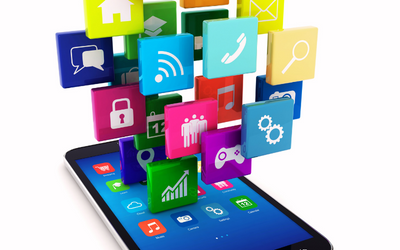Humans are drawn to stories, and that is one timeless truth I want you to hold on to as you read on. From ancient tales told around campfires to modern narratives shared through screens or on stage, stories have an irresistible allure. As a writer and digital marketing professional, I’ve witnessed firsthand the transformative power of storytelling in building a brand, captivating audiences and driving conversions. In this article, we’ll embark on a journey into the heart of storytelling in marketing, exploring how to wield this potent tool to not only captivate but also convert your visitors into paying audiences.
Use Stories To Fuel Emotional Connections For Storytelling
I’ve seen master storytellers transport their listeners to a different world, where characters come to life, struggles become relatable, and victories stir your insides. They captivate their listener’s emotions with the power of their words. This is the magic of storytelling – it bridges the gap between information and emotion. For you to use storytelling to build your brand or enhance your marketing efforts, your simple goal is to create a connection that resonates with your audience on a personal level.
Let me illustrate,
Imagine scrolling through your social media feed. Among the multitude of posts and ads, what catches your eye? It’s a well-crafted story that piques at your curiosity, speaks to your desires, challenges, or aspirations. That is how it works. Stories have the power to engage emotions, and emotions drive decisions. When you master the art of storytelling, you’re not just delivering information; you’re stirring feelings that lead to your audience action.
Using Storytelling To Craft the Marketing Narrative
Here’s how you can harness the power of storytelling to captivate and convert:
1. Understand Your Audience: Just as a master storyteller tailors their narrative to their audience, a successful marketer understands their target demographic. Dive into your audience’s desires, pain points, and aspirations. What stories resonate with them? What challenges do they face? Use this knowledge to craft narratives that speak directly to their hearts.
The story doesn’t have to be yours, you can use illustrations, experiences from a close friend, a world event, or even craft up a story where the listeners are at the center of the narrative. Making them the protagonist of the unveiling story. Seriously, what better way is there to grasp people’s attention?!
2. Create a Hero: Every great story has a hero – someone the audience can root for. In marketing, your customer is the hero. Present their challenges as dragons to be slain and your product or service as the hero’s tool of triumph. This approach empowers your audience and positions your brand as the guide leading them to success, and the product as the ultimate necessity they should pursue!
3. Weave a Journey: The hero’s journey is a storytelling archetype that resonates deeply. Use the knowledge of your user demographic research or survey to guide your audience through a narrative that mirrors their own path – from challenges to triumphs. You could share customer success stories, testimonials, and case studies. These real-life journeys not only showcase your product’s impact but also inspire trust and confidence.
4. Use Visuals: Just as a vivid description paints a mental picture, visuals enhance your marketing narrative. Incorporate imagery, videos, and infographics that bring your story to life. Visuals add depth and engagement, making your narrative more memorable.
Visit the website of Airbnb for an exemplary use of storytelling in marketing. Their “Stories from the Airbnb Community” section takes you on a journey through real-life experiences of hosts and guests. These stories not only showcase the platform’s offerings but also build an emotional connection with potential users, making them feel part of a global community and transforming them from a tech start-up into a successful worldwide brand.
Read the experience below,

So have you heard about how Eugene almost lost a six-figure job because she couldn’t find a pen? No she wasn’t too clumsy to forget her pen behind while going for the interview test. She actually went with her pen, but unfortunately it couldn’t work on the kind of texture the paper had. Moreover the writing tip has long been exposed and dried up of ink.
In her internal panic spree, she accidentally found this pen in her pants pockets which initially belonged to her husband and reputedly worked on just any paper surface or any surface at all. She’d found it while doing laundry and forgot to return it to him.
Here I’ll show you, this pen right here, saved Eugene’s life and won her a six figure employment with enough flexible working time. I recently found out it’s a new product and it’s selling for an insane $10!! It’s sick right?!
This was my response to the famous interview question of “Sell me this pen”. The interviewer was indeed a lady and eventually struggled with her pen during our session.
Her response? She’d even forgotten I was there for an interview! She took the pen to fill her papers and used it until we finished.
The results? She got the pen, I got a job and gained a new friend!
Hold up, here. What if I told you what you just read never happened? Yes, it’s purely a work of fiction. There was no Eugene needing a pen, or an interviewer borrowing mine. There wasn’t even an interview where I’ve ever been asked that sort of question.
But you believed it right? That is the powerful effect of storytelling. You bought into my story because it seemed real, like it happened. And if it was indeed real, the interviewer in the story bought into my story and reached out when she eventually needed a pen!
Storytelling, when executed masterfully, has the enchanting ability to drive conversions. The conversions may not be an immediate one, but the story has already secured a spot for your brand in a customer’s mind. And guess who they’re coming to when they’re in the same situation and need a solution? Yes, it’s you!
A well-crafted story captures attention, holds it, and compels action. When your audience feels emotionally invested in your narrative, they’re more likely to take the desired steps – whether it’s signing up for a newsletter, making a purchase, or sharing your content.
A compelling narrative has the power to transcend the digital realm and touch the hearts of your audience. It’s not just about selling products; it’s about igniting emotions, sparking connections, and inspiring action. So, as you navigate the ever-changing landscape of digital marketing, remember that behind every click, every conversion, there’s a story waiting to be told – and your brand holds the pe.
Read More: How to Create Lovely Compelling Copy for Your Website: 8 Ultimate Content Creation Hacks





